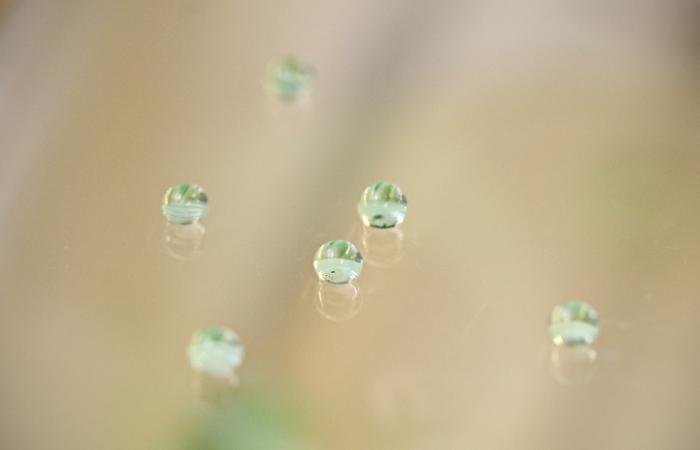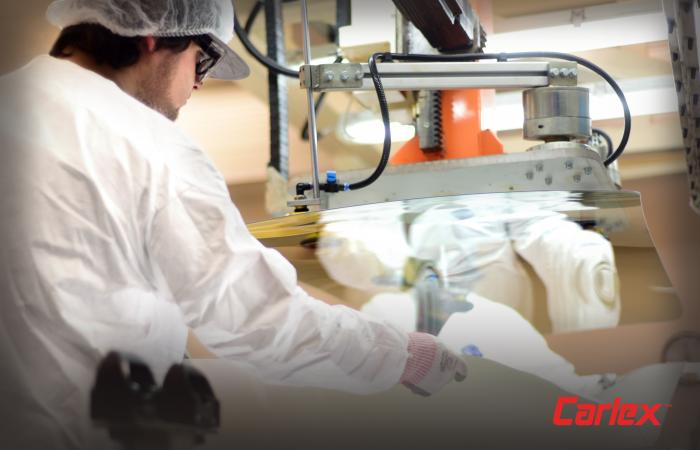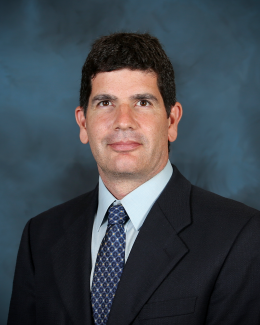OAK RIDGE, Tenn., June 13, 2018—Carlex Glass America LLC has exclusively licensed optically clear, superhydrophobic coating technology from the Department of Energy’s Oak Ridge National Laboratory aimed initially at advancing glass products for the automotive sector.
ORNL’s development of a water-repellent, transparent coating that carries away dust and dirt, reduces light reflection and resists fingerprints and smudges resulted from more than three years of research on superhydrophobic glass-based coatings.
Nashville, Tenn.-based Carlex manufactures automotive glass products including windshields, sideglass and rear glass components for top tier automakers, original equipment manufacturers and aftermarket industries. Carlex intends to leverage the benefits of ORNL’s thin, highly durable superhydrophobic coating technology to help improve driver visibility and safety, especially during inclement weather, a leading cause of vehicle crashes, injuries and fatalities.
“This agreement with ORNL is rooted in our belief that collaboration between industry and scientific research is critical to driving disruptive innovation and developing cutting-edge technologies that will have a positive outcome on society,” said Michael Bard, director of Advanced Product Development at Carlex.
“We’re enhancing products to assure that Carlex remains at the forefront of addressing today’s driver safety challenges, while also developing technologies that will meet the complex needs of a thriving and changing automotive industry,” Bard said.
“ORNL brings a great degree of creativity in approaching innovation. This, combined with Carlex’ deep knowledge and expertise in automotive glass industry, gives us confidence that we will achieve great success,” he added.
Carlex will further develop ORNL’s superhydrophobic technology at its Advanced Product Development Innovation Center in Nashville.
The science behind superhydrophobic
To be superhydrophobic, a surface must achieve a water droplet contact angle exceeding 150 degrees. ORNL’s coating enables a contact angle ranging between 155 and 165 degrees, so water literally bounces off, taking away dust particles.
The ORNL research team developed the superhydrophobic technology by depositing a thin glass film on a glass surface and heating the coated glass to transform the surface into two material compositions. A selective etching process produces a porous three-dimensional network of high-silica content glass that resembles microscopic coral and enables water-repellent and antireflective properties.
“The thin nanostructured layer of porous glass film enables these combined properties, making it suitable for commercial applications, particularly for automotive glass,” said ORNL’s Tolga Aytug, coinventor of the technology.
Aytug led the technology’s development and collaborated with Jeff Cornett, ORNL’s industrial and economic development manager, and Eugene Cochran, ORNL senior commercialization manager on the licensing agreement with Carlex.
Other superhydrophobic technology coinventors were David Christen and John Simpson. The technology was recognized with a Federal Laboratory Consortium for Technology Transfer Award in 2017 and an R&D 100 Award in 2015. The research was originally supported by ORNL’s Technology Innovation Program, and the work with Carlex was recently funded by ORNL’s technology transfer royalty funds.
Based out of Nashville, Tenn., Carlex Glass America, LLC is a premier global Tier 1 supplier of original equipment and replacement glass for original equipment manufacturers, automakers and aftermarket industries. Carlex is a subsidiary of Central Glass Co., Ltd., of Japan.
UT-Battelle manages ORNL for DOE’s Office of Science. The Office of Science is the single largest supporter of basic research in the physical sciences in the United States, and is working to address some of the most pressing challenges of our time. For more information, please visit energy.gov/science. For ORNL licensing information, contact www.ornl.gov/partnerships.







